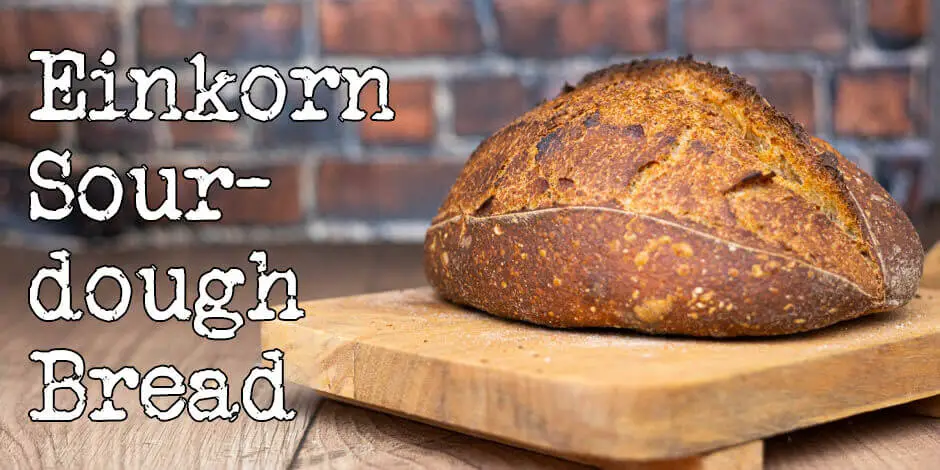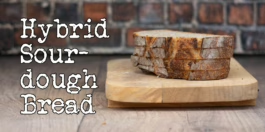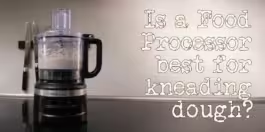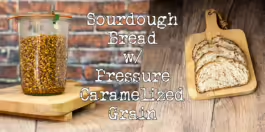When you bake a lot of bread, you get your favorites, but sometimes you need some variety. I am sure you have your favorite bread flour, which gives you a great oven spring and the crumb you love, but what about whole-grain flour? Do you have a favorite? Have you tried every single grain that you can buy? Well, I’m here to show you one you may have missed: einkorn. This is my einkorn sourdough bread recipe.
Einkorn is an ancient grain, along with the likes of Spelt, Emmer, Khorasan (called Kamut in Denmark), and Ølandhvede. Along with Emmer, Einkorn was one of the first strains of wheat to be domesticated. There’s clear evidence that Einkorn was domesticated around 10,000 years ago in archeological sites in Southern Turkey. Remains of einkorn were found with the mummy Ötzi, dated to 3100 BCE, that’s over 5,000 years ago.
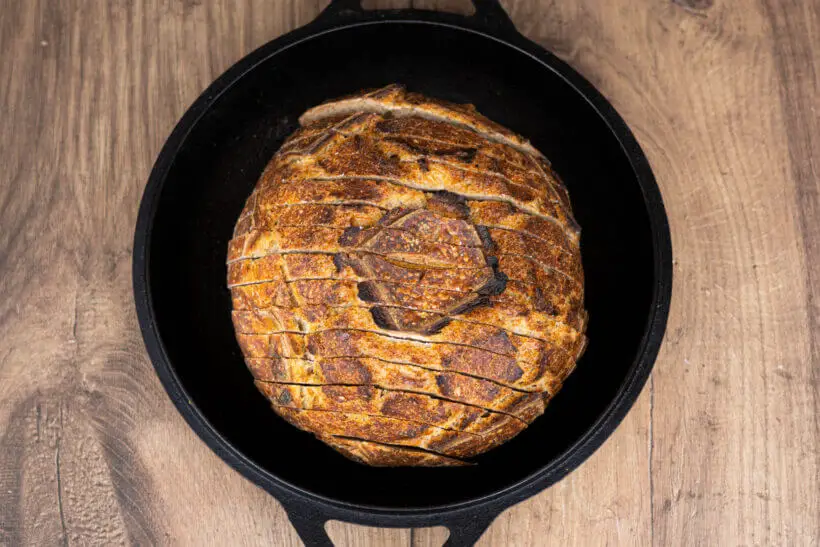
If you are just here for the recipe, you can press the button underneath to be automagically transported to the recipe:
Jump to Recipe Jump to VideoThe dough in this einkorn sourdough bread recipe
Vitals
| Total weight | 1400 grams |
| Pre-fermented flour | 9.1% |
| Hydration | 80% |
| Yield | 2 small loaves |
The dough
I’ve made the dough in this einkorn sourdough bread to contain 70% bread flour and 30% whole grain einkorn flour.
Because of the high amount of einkorn, which is low in gluten, you will need to use strong bread flour. If you can’t get that, I recommend lowering the hydration. If you use all-purpose einkorn flour, you will probably need to lower the hydration as well.
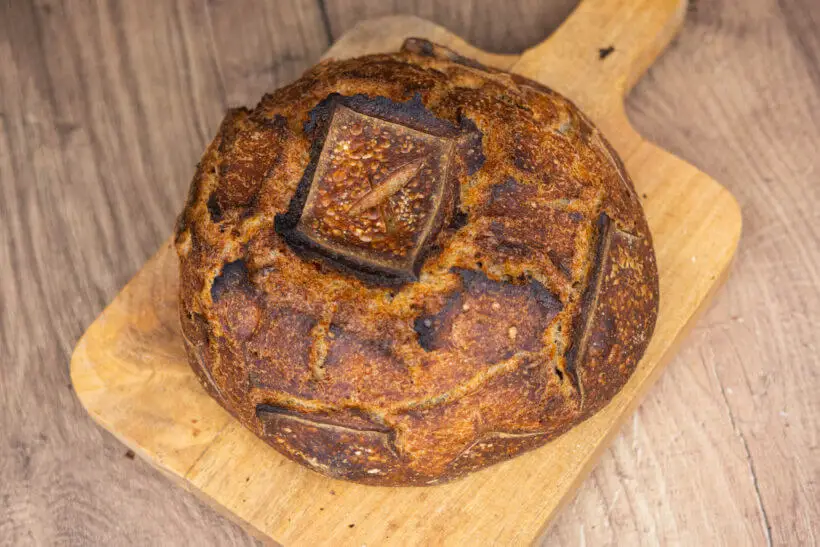
The inoculation, meaning the amount of starter, is 20%, and the amount of salt is 2%. This bread gets a lot better with more salt, 3% seems to be perfect, but I know a lot of people worry about their salt intake, so I’ve gone with the regular amount and let it be up to you to change it.
The dough is no-knead, with shaping, retarding, and then baking. Expect to be able to bake in the evening if you start in the morning. It follows my no-knead sourdough method, except it uses two-stage baking to help you bake two loaves and save electricity simultaneously.
| Weight | Ingredient | Baker's Percentage |
|---|---|---|
| 490g | bread flour | 70% |
| 210g | einkorn whole-grain flour | 30% |
| 546g | water | 78% |
| 140g | starter (100% hydration) | 20% |
| 14g | salt | 2% |
If you want to play around with the formula: change hydration, quantity, inoculation, and many other things, you can do that here in my Bread Calculator.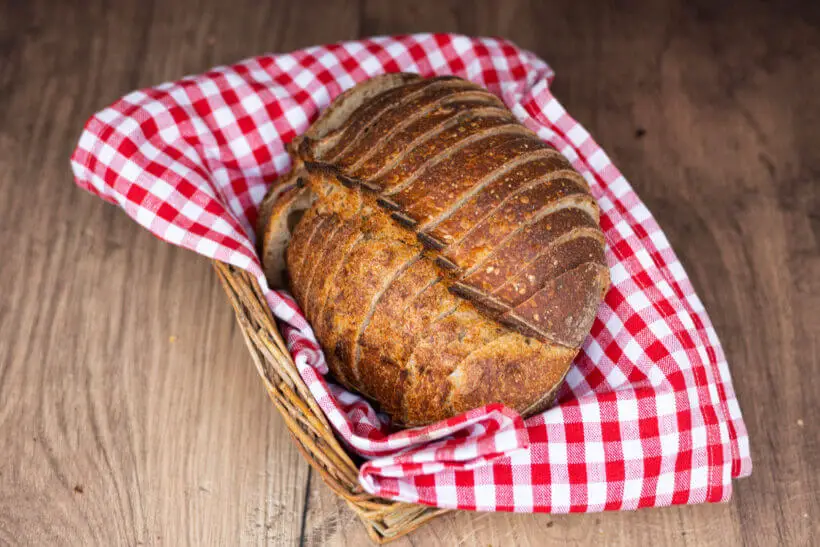
The conclusion of this einkorn sourdough bread recipe
When the bread is in the oven, a delicious smell enrobes your entire kitchen. When the bread comes out of the oven it is even more apparent. This is something special.
The taste is, of course, mainly wheat, but there are some super delicious nutty and even toasted notes. That’s without toasting the bread, of course.

The crust is crunchy, and the crumb is soft and chewy. Just how I love my sourdough. I achieved a surprisingly open crumb in my bread. Your results may vary depending on the bread flour that you use.
I can only say that you need to try to use einkorn in your baking. This is a keeper.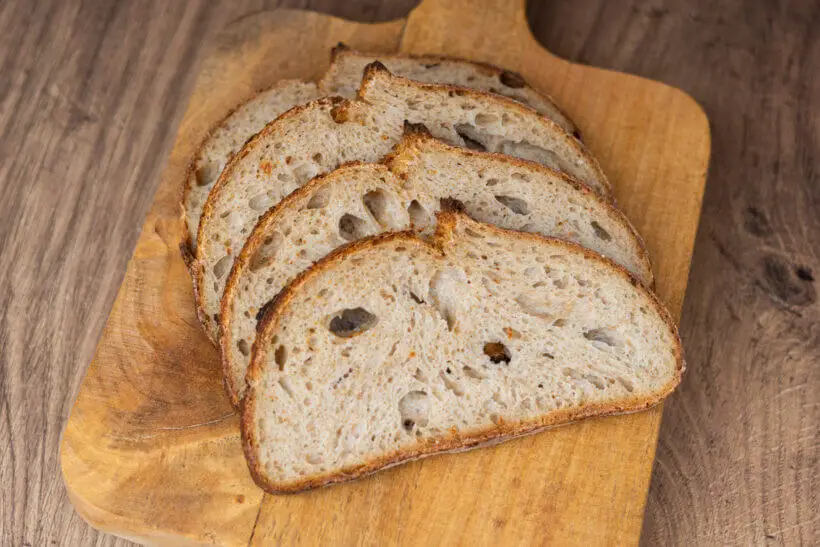
Please share this einkorn sourdough bread recipe on social media
This is my recipe for einkorn sourdough bread. If you like the recipe, please consider sharing it with like-minded bread lovers on social media.
If you make it and post it on Instagram, please tag me as @foodgeek.dk so I can see it. That would make me very happy.
Ad links! The links for equipment and ingredients in this recipe are affiliate links, which means I will receive a commission if you purchase the product.
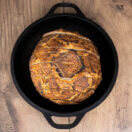
Einkorn Sourdough Bread
Equipment
- challenger bread pan or the combo cooker
- combo cooker or the challenger
Ingredients
- 490 g bread flour
- 210 g einkorn whole-grain flour
- 546 g water
- 140 g starter fed and grown to its peak
- 14 g salt
Instructions
Mix the dough
- Add bread flour, einkorn whole-grain flour, and salt to a medium bowl. Mix it with your hand.
- Then add sourdough starter and water. Mix it until all of the flour is hydrated. If you want to target a different hydration, you can add 507g (75%), 469g (70%), or 430g (65%).
- Put it in a bulking container sprayed with baking spray, and level the top.
- Mark the dough's top and where it will have grown 25% on the container. Then put the dough somewhere warm to bulk ferment. I used my proofer set to 30°C/86°F. It took about 4½ hours for my dough, but go by growth, not time.
Divide and shaping
- After fermenting the dough, take it out of the container and split it into two equally sized pieces. Then using your scraper, shape each piece into a light ball by dragging the dough across the table.
- After you finish the pre-shaping, let the dough rest on the counter for 20 minutes.
- Then it’s time for the final shaping. Watch the video for how to shape either a boule or a bâtard. Put both loaves in the fridge from 8 hours up to 48 hours.
Bake
- When ready to bake, heat your oven to 230°C/450°F with a dutch oven inside. About 30 minutes should be enough.
- Then grab a loaf from the fridge. Dust the bottom with rice flour to help it slide off the peel.
- Flip it onto the peel, and score the loaf.
- Then put it in the oven, and bake it for 25 minutes. Just before the time is up, prepare the other bread.
- Move the first bread from the dutch oven to the side, put the freshly scored loaf in the dutch oven, and put the lid on top. Bake it for 25 minutes.
- Then take the first bread out and put it on a wire rack. Remove the lid of the dutch oven and bake for a final 25 minutes.
- Take the second bread out and put it on a wire rack, and let them both cool to room temperature.



